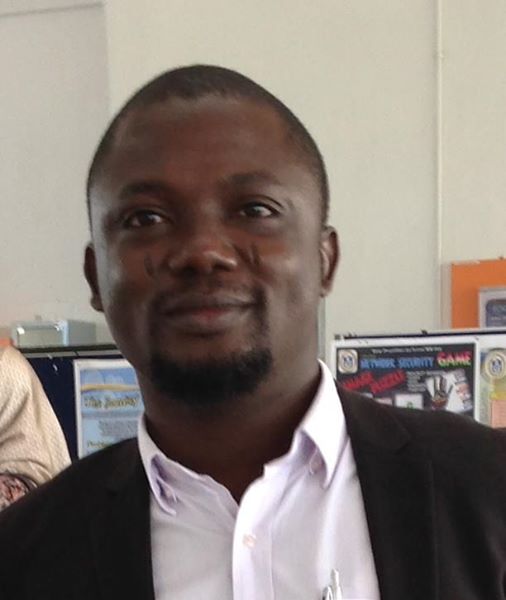COMPUTER SCIENCE, INFORMATION TECHNOLOGY AND INFORMATION & COMMUNICATION TECHNOLOGY (ICT): A TREATISE ON THE DISTINCTION

SEMIU AYOBAMI AKANMU
Semiu is Doctoral Researcher in a Malaysian University
I do often receive questions –most especially from higher institutions’ applicants– about the difference(s) in these courses; CS, IT and ICT, and which of them is more promising, lucrative and interesting. Measuring lucrativeness of a course as a requisite for its choice is not an uncommon practice among young ones. But the most important to me is responding to probes concerning the technical differences of these courses and necessary information to be sought by an applicant in view of making the right and intending choice.
First, these branded names are not exhaustive list of possible encounter of labels given to courses in or related to Computing. We also have Information System (IS), Business Information System (BIS), Management Information System (MIS), and Software Engineering (SE). There are cases whereby narrow fields of specialization in Computing are pursued as full-fledged undergraduate courses. Examples like Network Engineering, Game Design and Development, Database Administration, and Robotics and Artificial Intelligence, among others, can be experienced under such circumstance.
With this indefinite course label experience, the first most important inquiry by an admission-seeking student must be tamed towards the understanding of the course synopsis and teaching structure of the course s/he wishes to study in that particular university of his or her dream. By synopsis I mean: the content of the course, outlining what will be taught from the first to the last semester, while the teaching structure characterises how this will be taught. We have schools whose teaching structure in theory-practical ratio can be placed as 20-80, and some as 60-40, as the school decides. So, it is important to seek ‘in-house’ knowledge of what is obtainable in the school. Also to be noted is: The particular university. Even when these courses are intertwined and can be addressed in different forms by two different universities, there are cases whereby the same course (by name) will have (slight) different content, depending on the philosophy of the institution. Though the difference is always negligible, must the omission or commission might be your point of interest. For example, if you are an intending Computer Scientist who wishes to specialise in Human Computer Interaction (HCI) where you will learn how to develop interactive systems as assistive and haptic technology, undergoing the suggested due diligence will be profitable. There are universities that teach HCI as multimedia technology course, while some restrict the content to core computer scientist approach, where gaze reflection and image sensor, voice processing and recognition are the interaction-supported inputs. These discrepancies, as afore-explained must be religiously observed.
Be it as it may, there are fundamental differences among CS, IT and ICT –as I have observed and witnessed as a practitioner and researcher in the field. However, without fear of contradiction, we can safely substitute SE for CS, while IS, BIS and MIS largely represent the same course synopsis, and their difference in comparison with IT is that the former concentrate on business-centred information systems and applications, while the latter focuses on a more broad horizon like education, governance, health, social, and what have you. ICT, with its inclusion of communication –the C in the initialism– is biased towards communication technology, and this makes it to focus more in Networking or Communication Engineering which coincidentally is a specialization in Electrical/Electronic Engineering. This suffices for a lay-man understanding.
Now, a bit further and technicalities-driven! Apart from ICT that concentrates more on data (image, voice, text, file, and packet) transmission from one point to the other with due respect to the underlying architecture and technologies, CS and others –as listed earlier– have a common point of intersection. They all address programming language, the art of coding and system/application design and development. They all espouse data structure and algorithm design and analysis as routes to understanding the core of programming languages. However, the difference lies in the preferences and the intention of each of these courses content. While IT and its related fields concentrate on application development to solve human problems, Computer science prefers to concentrate on developing methods, algorithms, protocols and architectures that will help in proffering betters ways of solving the problems. For instance, in developing a social media application, an IT student will be concerned with users’ requirements analysis and system design, sorting, editing and writing codes, and building a working application that will meet the users’ needs and satisfy their experience. This solves the human quest for social relationship. It is the Computer scientists’ role to design security methods that will resist phishing and other social media application-related security breaches. Also, photo tagging, suggesting friends and graph search (using Facebook as an illustration) that helps “you find more of the people, places and things you’re looking for and discover new connections based on what others have shared with you” are computer scientists’ works, done to make the performance of the application better and satisfying. There is no gainsaying, as shown above, that CS is ‘some steps’ farther from IT. I doubt if anyone will contend this.
As described above, the responsibilities on the shoulders of the Computer scientists necessitate the mathematics-heaviness that always accompanies CS as a course. They should and must have a grasp of discrete mathematics, numerical operations, and differential equations methods as problem-solving tools. This is why it is not surprising to see that majority of all winners of the Turing award; the Nobel Prize in Computing, are Mathematicians. Leslie Lamport, the current holder of this award, is living supporting evidence. He is famously known for his works on Timestamp, Concurrency, and Deadlock resolution in Distributed Systems. While works like: Designing Android system for Tax calculation, Developing menstruation monitoring system, inventory management systems, and others in that realm can be safely categorised under IT, works like image/voice recognition, information retrieval/search, computer graphics, computational and mathematical modelling, information security, and their ilk are categories of CS.
Therefore, CS, IT, and ICT and others that have been mentioned can be seen to be closely interrelated and intersected. CS is bothered more about the performance and optimization of the underlying technologies; IT is interested in its functionalities.
Established in March 2013, JarusHub is a Nigerian information hub with focus on career and management. It is rated Nigeria's most authoritative destination for online career resources. It parades an array of Nigerian professionals who share their career experiences with a view to bridging career information gap and mentoring a generation to success. Whether you're a student, a recent graduate or an established professional, or even an executive, you will always find something to learn on JarusHub. All enquiries to jarushub@gmail.com or 0808 540 4500. Facebook: www.facebook.com/jarushub; Twitter: @jarushub or @mcjarus.
Attend JarusHub’s 2024 Seplat Assessment Center Coaching
October 29, 2024
Let us have your say by leaving a comment belowCancel reply
Recommended For You
-
COMPANY REVIEW: DANGOTE GROUP
March 29, 2018 -
CV mistakes you should not be making
June 29, 2015 -
HOW MBA CAN AID YOUR CAREER SWITCH
February 26, 2016



